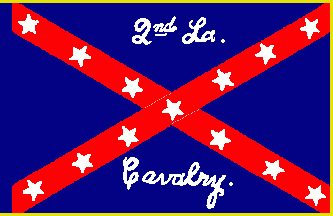You might read the three previous posts on the Civil War In April 2013, April 2014, and May 2014, before reading this. You will find they add color to this post. April 2014 has a short video as well.
The type of cannon I have served, so far, is called a Mountain Howitzer. Previous to my Civil War experiences I was exposed to this type cannon at Fort Laramie National Historical Site and Fort Casper both in Wyoming and Fort Larned in Kansas. The Wyoming sites discussed the cannon as part of their historical presentations, usually held on Memorial Day weekends and other holidays. At Fort Larned they had live fire demonstrations for their events.
The 12 pound, Mountain Howitzer was designed as a relatively light weapon of 150 pounds (68kg) that could be disassembled and packed around by pack animals. The gun tube was made of bronze. The carriage could be taken apart and packed on animals as well. Its main feature, other than mobility, was its ability to fire standard 12 pound ammunition: canister, shrapnel, and shells. (but not solid shot) Because of the exploding nature of the shrapnel and shell ammunition, the American Indians call these cannon "the gun that shoots twice". Indian fighting in the American West was mostly Cavalry action. Because of the cumbersome nature, hauling, assembling of this cannon it was seldom carried, much less used in that regard. However cannon were used at the Sand Creek Massacre, and they might have been the mountain howitzer.
The Civil War was very different. Because of the relative light weight and maneuverability, as compared to other cannon, and the more organized battles, Mountain Howitzers were used extensively. The Louisiana Second Cavalry, with its four gun battery of these cannon, saw extensive action throughout the Civil War in the Louisiana Theater: Donaldsonville (September 21-25, 1862); Georgia Landing, near Labadieville (October 27, 1862); Bayou Teche (January 14, 1863); Fort Bisland [in reserve] (April 13-14, 1863); Irish Bend (April 14, 1863); Brashear City [detachment] (June 23, 1863); Red River Campaign (March-June 1864); Henderson’s Hill (March 21, 1864); Mansfield (April 8, 1864). They fought under this version of General Richard Taylor's Flag.

Another unit with the Mountain Howitzer was N. T. N. Robinson's Battery of the Louisiana First Cavalry. Indirect records show they participated in the battle at Stone's River/ Murfreesboro Dec. 31 1862- Jan. 2 1863. I found this record:
Robinson's Company, Horse Artillery
Stationed at Murfreesborough, Tennessee, September 1 - December 31, 1862
Stationed at Bean Station, January - February 1863
Stationed near Jacksborough, Tennessee, March 1- June 30 1863
From November 1, 1861 to May 1, 1863, this company had three howitzers, to which was added from time to time three 3-inch rifle guns, two of them being steel Parrott guns captured by one regiment, First Louisiana Cavalry, from Colonel Sanders� Abolition raiders on June 27, 1863.
The Wild Cat Cavalry Company, Captain [Obed] P. Miller, being wholly without officers, was transferred by Major General [Simon Bolivar] Buckner to Colonel Scott, commanding brigade, and by him to this company.
June 1. - At an election held for officers, in pursuance of orders from brigade Headquarters, the following were declared duly elected: N. T. N. Robinson, Captain; Winslow Robinson, Senior First Lieutenant; J. A. Turner, First Lieutenant; Charles E. Liverich, Senior Second Lieutenant; the juniors are still vacant. N. T. N. Robinson, Captain.
At the battle of Chickamauga, Louisiana First Cavalry, and Robinson's battery were attached to the command of Gen. Nathan Bedford Forest. In action there, Robinson's Battery was held in reserve. There was another report that Robinson's battery opposed the Union crossing of the Tennessee River in action just prior to the battle at Lookout Mountain.
Robinson's Battery dissolved in December 1863 when Braxton Bragg reorganized his artillery units. An obituary for N. T. N. Robinson in 1909, reported he had an extensive career in public service before passing away in New Orleans.
No comments:
Post a Comment